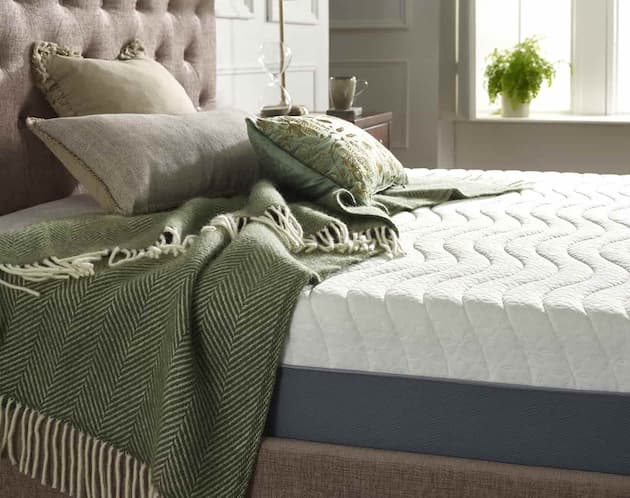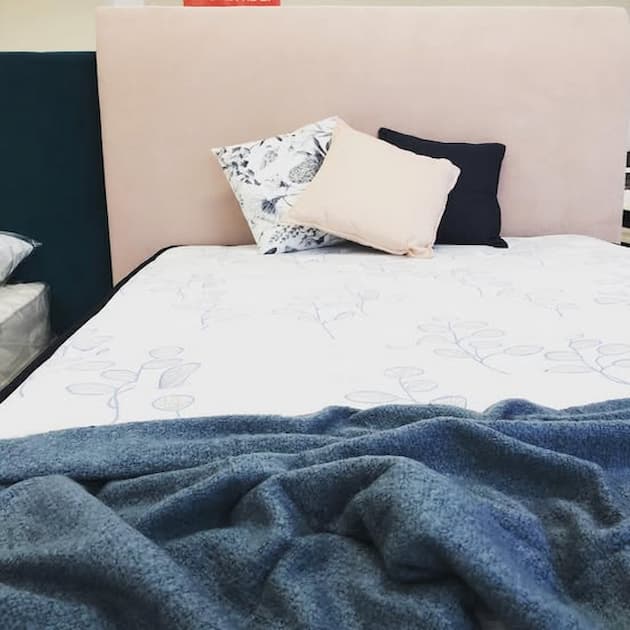Discover How to Choose a Mattress for Your Sleeping Position
A quality mattress is essential for getting a good night’s sleep. How does your mattress feel lately? Does it creak when you turn over? If yes, the springs might be worn out, preventing you from comfortably settling in once in bed. Or, it feels too soft, too bouncy, or too hard on your body regardless of the fact you’ve bought it recently. Whatever the case, it may be time for a new mattress.
How Do I Know What Mattress Is Best for Me?
The most common mistake when shopping for a mattress is not considering our sleeping position. Even if you do your research and choose the most recommended mattress, if it doesn’t give the optimal support your body needs when in the position you mostly sleep in, you’ll still feel uncomfortable. If you’ve ever experienced shoulder, hip, or lower back pain, you’ll know that a mattress that doesn’t fit your sleeping posture can lead to many more issues than you may imagine. This is because of pressure points, the areas of your body most in contact with your mattress.
Various sleeping positions impact different pressure points. The ideal mattress avoids pressure points and balances comfort and support. Since these two elements are key to the optimum night’s sleep, you must consider how these factors affect each sleeping position so you can pick a comfortable yet supportive bed mattress.
- The mattress’s comfort layers, including memory foam, relieve pressure points according to your preferred sleeping position
- The mattress’s firmness rating
Side Sleepers

The most common position, sleeping on your side is excellent for pregnant women, and those with heartburn or digestive issues.
Best Mattress for Side Sleepers
A pocket-spring mattress with a deep comfort layer on top is the ideal bed mattress for side sleepers. The more deep the layer of comfort, the better! You can sleep easily on your side because a beautiful, thick layer will conform to your particular shape. These mattresses, which are sometimes referred to as hybrid mattresses, ease shoulder and hip strain. They aid in avoiding undesirable issues frequently linked to side sleeping, such as lower back strain, pressure point pain, and numbness in the arms.
You will benefit greatly from the following mattress comfort layers if you sleep on your side:
- Memory foam. A memory foam mattress gradually conforms to the curve of your body and offers superior pressure relief. Your hips and shoulders will receive extremely individualised attention.
- Gel. With a gel mattress, you won’t experience the “sinking” sensation that comes with regular foam-based beds. They’re also well known for being exceptionally cool and breathable.
- Latex. These mattresses are more responsive and offer superior bounce-back.
- Pillow top. The luxurious top pillow layer of a pillow top mattress provides additional support and comfort. If you want a lavish mattress, this is a terrific option!
Best Mattress Firmness for Side Sleepers
We suggest somewhat softer mattresses if you sleep on your side. This is ideal for side sleeping because it will provide proper spinal alignment, head and neck support, and a slight dip for your hips and shoulders into the mattress. This is a general guideline, of course. It is ultimately up to you to decide how firm or soft you want your mattress to be. Another factor is your body weight; if you’re lighter, your mattress will feel firmer. Your mattress will feel softer if you weigh more.
Back Sleepers

Due to the natural alignment of your spine, lying on your back is considered one of the healthiest sleeping positions. You can avoid putting too much strain on your body by sleeping in a level, straight position.
Best Mattress for Back Sleepers
Open-coil, pocket-sprung, or even orthopaedic mattresses are the best options for people who sleep on their backs, as they offer the highest support and care for natural spinal alignment. Additionally, the heavier parts of your body, usually your belly, may require additional support.
- Pocket sprung. A mattress with pocket springs offers the most adequate support. Zones are found in many pocket-sprung mattresses, implying that the heaviest locations will receive stronger support, while other places will receive lighter support.
- Open-coil. Open coil mattresses, known as standard spring mattresses, disperse your weight evenly for excellent pressure reduction and all-around support. Keep an eye out for zoned open coil mattresses.
- Orthopaedic. The epitome of expert back care, an orthopaedic mattress is a terrific option. This mattress can help you avoid waking up stiff and painful, improve your posture, and lessen the strain on your spine.
Best Mattress Firmness for Back Sleepers
We suggest a little firmer mattress if you sleep on your back. That’s because your heaviest areas will require additional support and optimal spinal alignment. You may still like a softer feel, as this is a personal preference. Another crucial factor to consider is your body weight; choose a firmer mattress if you weigh more than average.
Stomach Sleepers
Although it can cause back and neck aches, sleeping on your stomach can be incredibly relaxing. This can be avoided with the correct mattress.
Best Mattress for Stomach Sleepers
A pocket-sprung mattress is the greatest option for people who sleep on their stomach or front. Mattresses with pocket springs assist in distributing body weight uniformly, maintain your spine in its natural alignment, and relieve all possible pressure points. Ensure it has a cushioning layer, like eco comfort, gel, latex, or memory foam. Your mattress should do the following to provide you with the finest possible sleep:
- Maintain proper spinal alignment. Compared to a side sleeper, you will want extra support, but not as much as a back sleeper.
- Offer effective pressure alleviation. It should support delicate parts like your head, neck, arms, and shoulders without being unduly soft.
- Strike a balance between support and comfort. Compared to a side-sleeper, you will require less padding, but more than a back-sleeper.
Best Mattress Firmness for Stomach Sleepers
We suggest mattresses that balance comfort and support if you sleep on your front. It shouldn’t be too soft but should “give” a little. You will overarch your spine and sink into your mattress if it is too soft. Your spine won’t flex in a healthy, natural way if it’s too rigid.